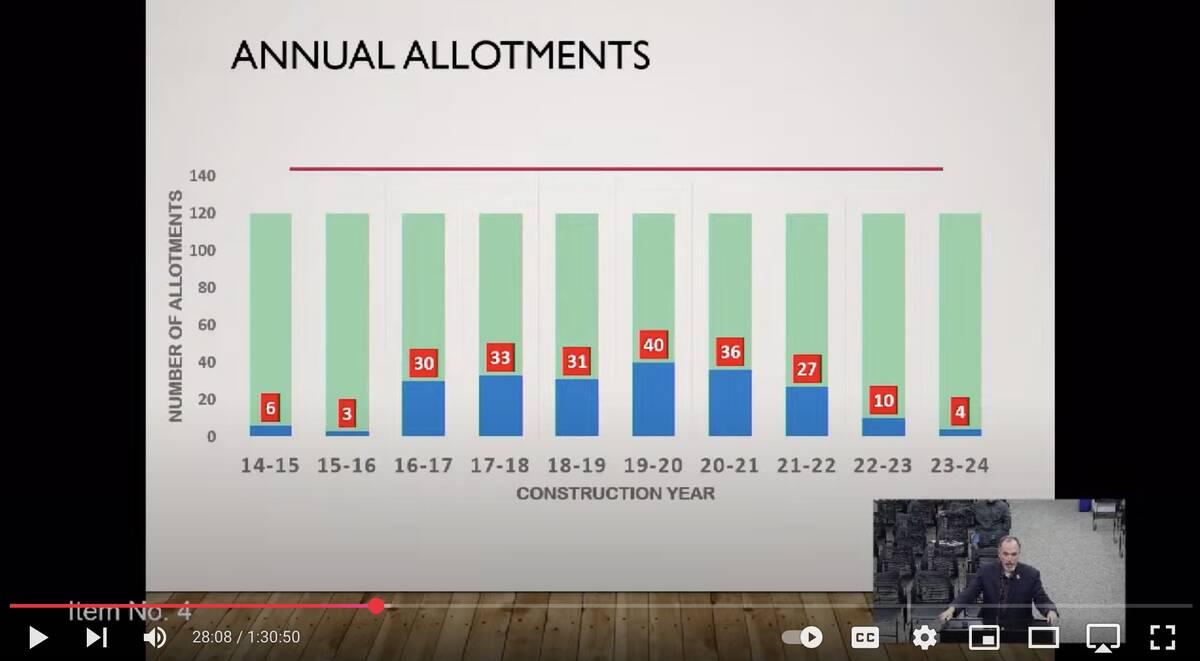Proposed subdivision rated 89% by committee
While it is not yet a done deal, a proposed 15-home subdivision on the southern edge of Boulder City took a big step toward approval this week as the Allotment Committee gave the plans an 89% rating.
The development is proposed for the south end of Arizona Street, between Avenue M and Northridge and east of the La Plata cul de sac. The builder is Beazer Homes, a developer largely known in the Las Vegas area for “starter” homes but these will not be anything that falls within any official definition of “affordable.” According to the developer, the homes, which are slated to run between 2,500 and almost 3,200 square-feet will be priced between $700,000 and $800,000. According to multiple real estate professionals, buyers can expect to pay another $125,000 or more after lot premiums and interior design upgrades, meaning these home will likely tickle the $1 million mark when all is said and done.
The meeting itself was something of a primer on the 1979 Growth Ordinance that limits the number of homes that can be built in Boulder City. This was the first meeting for this version of the committee and five of the six members were brand new. A seventh slot on the committee is currently vacant. So the first order of business was electing a chair and a vice chair and that was followed by a long presentation by Acting City Manager Michael Mays laying out the history of the Growth Ordinance as well as the responsibilities of the committee.
“Just as we saw with the Storybook development a few years ago, a developer can request up to 30 allotments in the current construction year and request reservations of up to 30 for the next two construction years, not to exceed 90,” Mays said in an email after the meeting. “When ready, the developer asks the city council to convert reservations into allotments in future construction years. Over the past several years the city has received few allotment requests for new residential construction — only 37 requests in the past three years, keeping us well-below the 120 permitted annually by the controlled growth ordinance.”
Boulder City is unusual in the number of barriers that are put up to limit residential development.
First, land has to be obtained and there is very little undeveloped private land in the city. (The Beazer development is slated for land that had been previously purchased by a different developer and was later purchased by Beazer.) Also note, the the city can’t sell more than one acre of land without putting that sale to a vote of residents.
Second, zoning issues have to be cleared and approved by the planning commission. Then, before any proposed development can get building permits, the developer has to apply for and receive an allotment under the Growth Ordinance. That law limits both the overall number of residential units to 120 per year and places multiple restrictions on developers. First, no developer can pull more than 60 allotments in any construction year. (Construction years run concurrent with fiscal years, i.e., July 1 through June 30.) But even beyond that, no single development can qualify for more than 30 allotments in one construction year. While that will not impact the proposed Beazer subdivision, it may mean that construction of the 122 homes in the Tract 350 development that is supposed to fund a new city aquatics complex may take five years or more to complete.
Given the name of the allotment committee, one might think that they actually approve allotments under the Growth Ordinance, but this is not the case. What the committee actually does is look at a total of nine categories ranging from design, to public accommodations, to the existence of open space and walking trails and individual members rate each category. Once that is done, staff tallies they responses and assigns a total percentage. The Beazer development was rated at 89%.
That rating will now be forwarded to the city council for final approval of allotments at which time the developer can begin the process of obtaining building permits. If building has not begun within one calendar year, the allotment is vacated.
















